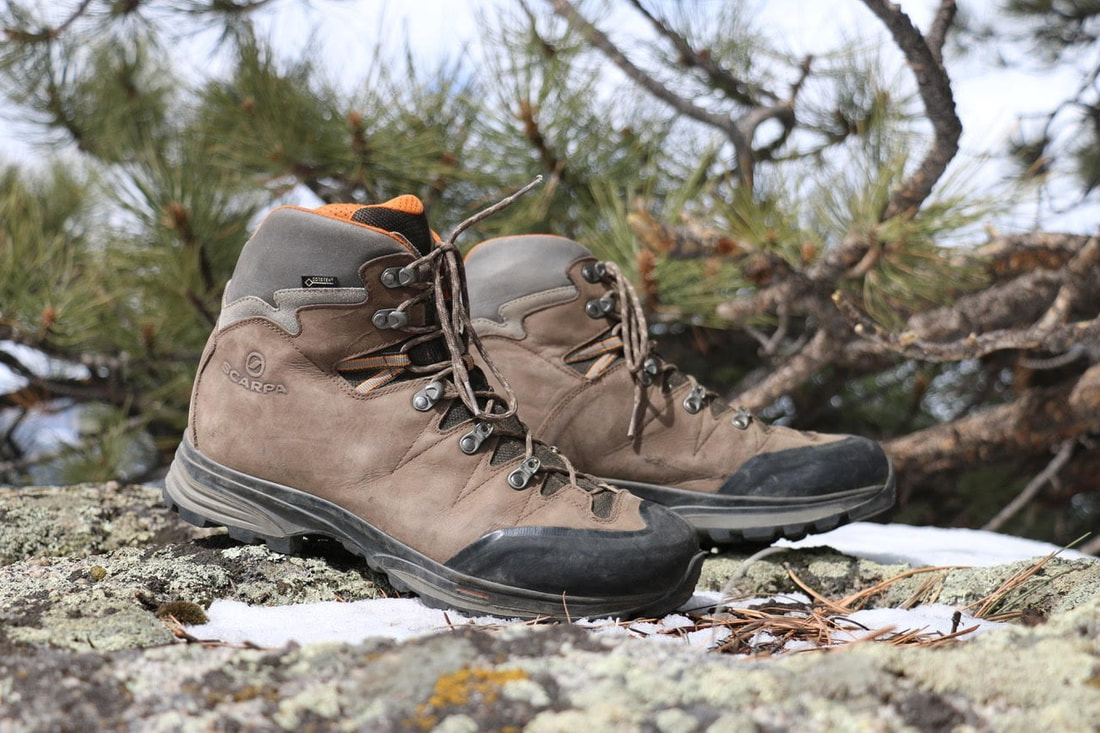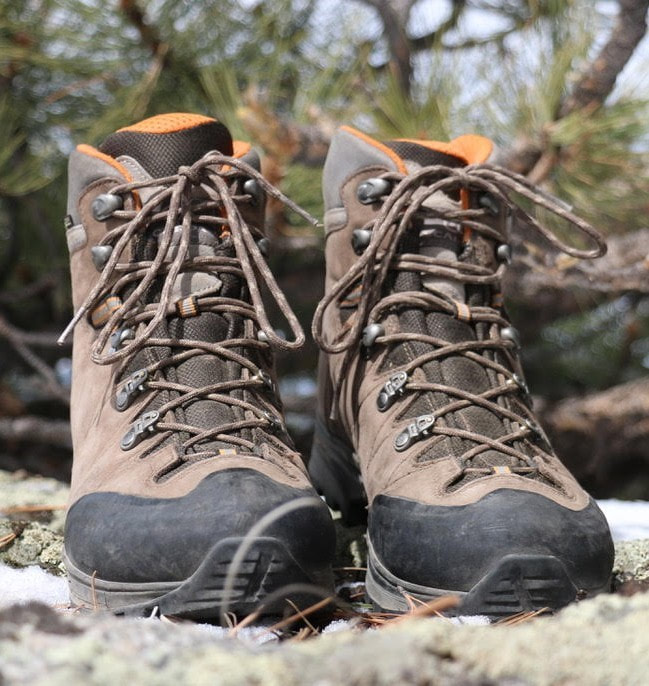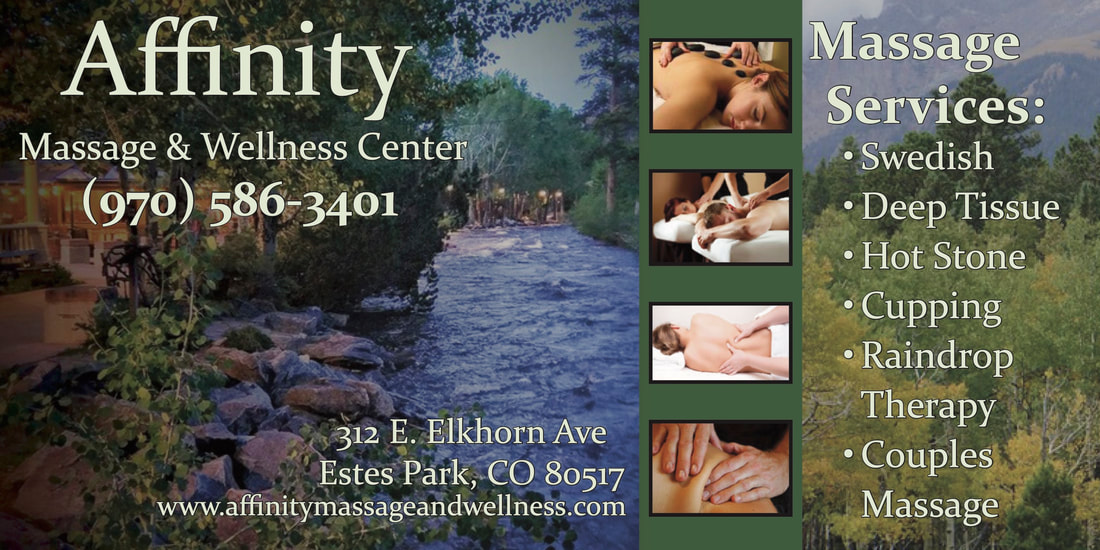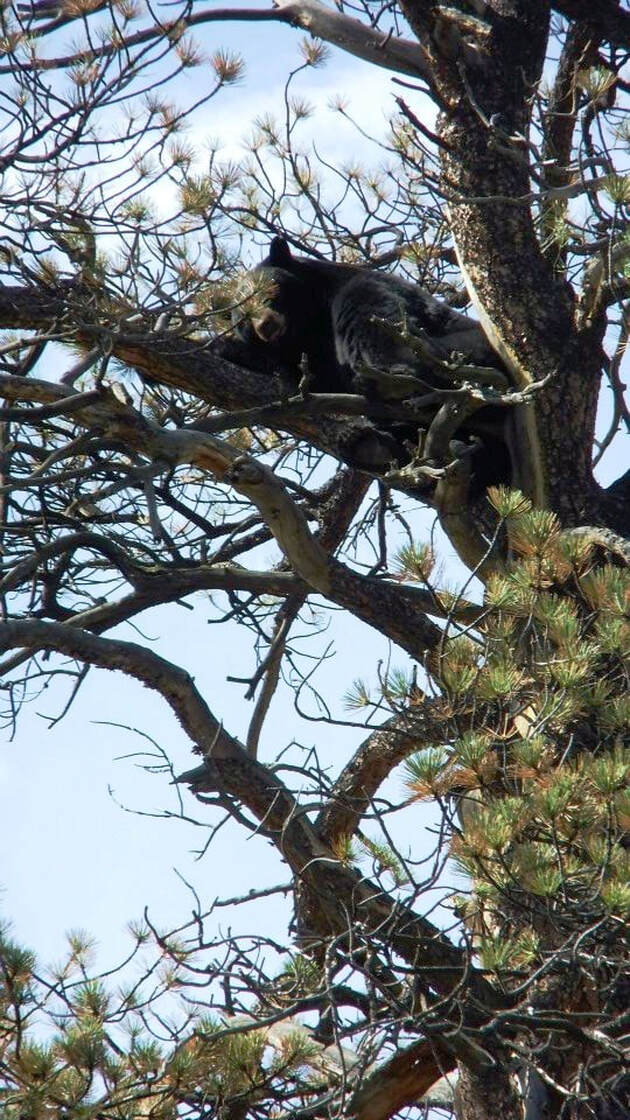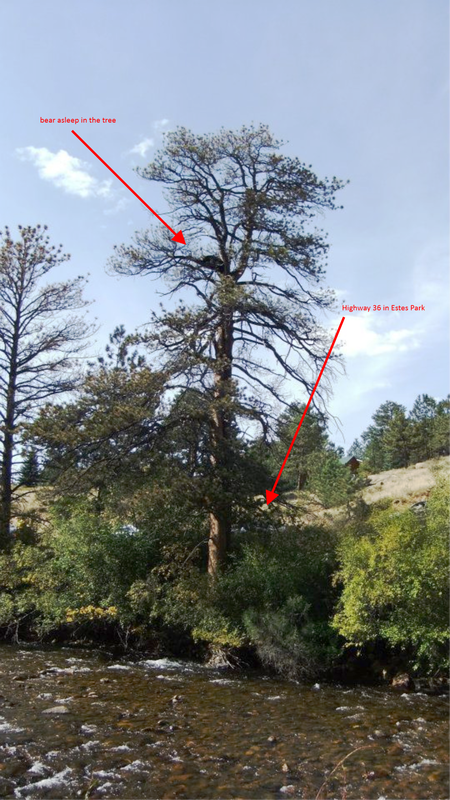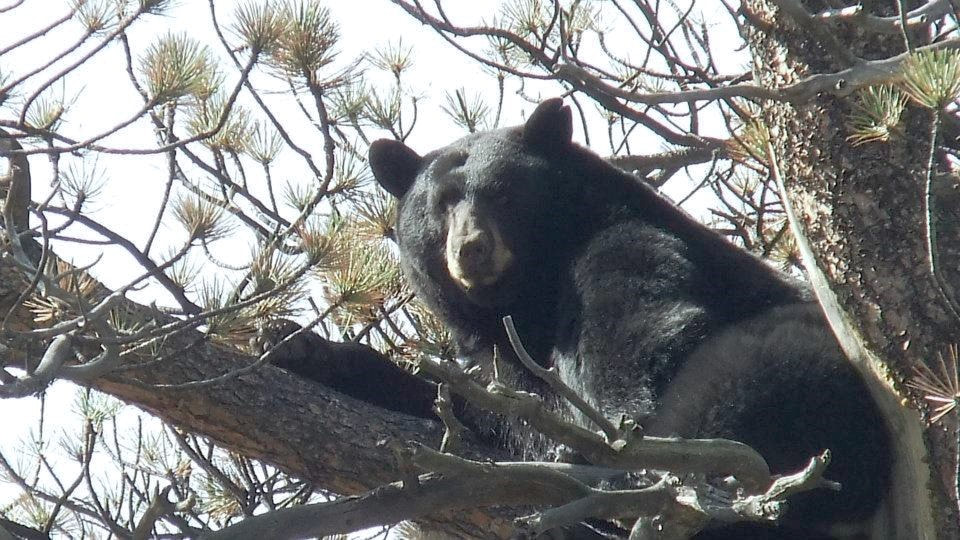|
story and photos by Murray Selleck They're a touch heavy. They're stout and strong and beefy. They have covered some tough terrain over more miles than I can count. They are my full-grain leather, Goretex, durable, rockered, ankle protecting, Vibram soled Scarpa Zanskar* hiking boots. When I hike I don't leave home without them! I've had these boots for years and they show little wear and tear despite the heavy use. Full-grain leather offers a very durable boot construction. Cuts and scrapes into the leather do little to affect the life of the boot. If I relied on lightweight trail shoes these past years, I probably would have bought and replaced at least five or six pairs instead of relying on my single pair of leather boots. The math and money quickly reveal you get what you pay for. The weight of a full-grain leather boot, of course, will be more than a trail running shoe or lightweight hiker. Perhaps it is my mindset or that the benefits of this kind of boot are so ingrained into my thinking I don't notice the weight. I haven't felt any more tired at the end of the day than any of my hiking partners due to the weight of my footwear. I do know that often some of my hiking buddies wearing softer footwear are bit slower when the pace when we're navigating a steep boulder field or traversing a slippery angled slope of scree. “Fast and Light” is the mantra of many a hiker, however, the rest of that story might include “fast to wear out and fast to replace.” I believe there is much to say about sustainability and durability and that includes my choice in footwear. My leather boots are strong torsionally and the sole protects my feet from sharp stones and sharp edged boulders. I can pretty much step anywhere with confidence. I don't feel the boot sole folding over rocks and I can edge into a loose traverse keeping my footing. The boot sole creates a strong platform that supports my foot. The benefit is my feet don't get beat up during big mileage days. An additional benefit to footwear with good torsional sole strength is protecting your ankles from a nasty twist or sprain. Soft trail running shoes or lightweight hikers that can be twisted like a wet sponge offer little in protecting you from a sprained ankle. I like a long, injury-free hiking season! The fact that my boots are waterproof speaks to their multi-seasonal functionality. Early spring hikes when snowdrifts as big as whales attempt to block the trail, I find it easy to stay on route. I can easily kick into drifts and snowfields creating a secure staircase of steps. When summer monsoons dump not only rain, but also hail and grapple turning dusty trails into liquid channels of water and mush, my feet stay dry. And in the fall, when an early snow tries to cut the hiking season short, a Goretex waterproof boot (or equivalent) extends the hiking season until we happily replace our hiking boots with skis and snowshoes! Lightweight, breathable, non-waterproof shoes in any of these situations will have your socks soaked and feet cold and miserable. Long ago I learned hiking when your feet feel like cold stumps and you can no longer feel the trail beneath frozen feet is no way to happily cover distance. In fact, you just can't get home quick enough. The Vibram soles on my boots have plenty of tread life left and the secure traction the boot sole provides is a wonderful thing. As mentioned above, when your boots have a nice lugged sole with bombproof traction stepping up and on to teeter-tottering boulders is easy. Keeping your footing while on snowfields or tromping along slushy trails is just what you do. No hesitation, no route finding dilemma, just do it! Most leather boots have a rockered sole. That is the sole is pretty flat along the length of your boot but up toward the toes the sole bends upward. This is called rocker. Rocker helps propel you forward. There is a designed mechanical benefit built into the boot sole to roll your stride forward comfortably even in a beefy leather boot. Rocker offers a very natural walking feel to the boots. My Scarpa boots are cut above my ankle bones. Those of you who like to hike in trail running shoes are cringing. However, it has been a very long time since the outside of my ankles have clipped a trailside rock sending me cringing, cursing and hopping up and down the trail with tears in my eyes. Above-the-ankle cut boots offer more ankle bone protection. And when the time comes, my boots will be able to be resoled. New rubber. New tread. New life! Rocky Mountain Resole in Salida, Colorado does a terrific job at extending the life of many kinds of boots. As long as I keep the uppers in reasonable shape, a new Vibram sole can be applied. One small step for man, one giant leap for keeping your favorite boots! I believe most hikers have forgotten how versatile a leather boot can be. The trend in footwear for hiking over the past decade has been to use trail running shoes. I won't argue that point. What I will argue for is that if you are not convinced a leather hiking boot is in your future at the very least make sure your trail running shoes or light hikers are waterproof. Leave No Trace Ethics teach us to stay on the trail. If there is a muddy bog or puddle we should walk right through it splishing and splashing. Leave No trace teaches you to prepare for your hike or backpack trip before you leave. A big part of preparation is proper footwear. Walking around mud puddles only widens the trail. Or worse yet, multiple parallel trails are created as hikers detour farther afield just to keep their shoes from getting wet. Trampling fragile vegetation and creating unintended trails is not good. Think. Plan. Prepare. And hike as if you are the first but not the last! *The Scarpa Zanskar is no longer in production. However, the Scarpa Kinesis Pro GTX, Kailash Plus GTX, and Terra GTX are all great leather boot choices. 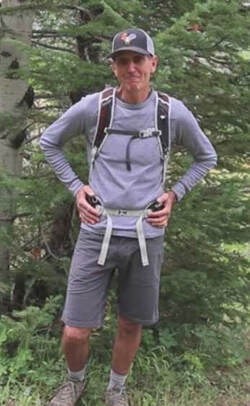 Murray Selleck moved to Colorado in 1978. In the early 80s he split his time working winters in a ski shop in Steamboat Springs and his summers guiding on the Arkansas River. His career in the specialty outdoor industry continued for more than 30 years. Needless to say, he has witnessed decades of change in outdoor equipment and clothing. Steamboat Springs continues to be his home. This piece of original content was sponsored by our Estes Park business partners including Affinity Massage & Wellness Center, The Country Market and Images of RMNP
0 Comments
How to avoid an attack, and what to do if you are mauled by a bear story by Chadd Drott, Chadd's Walking With Wildlife photos by Barb Boyer Buck The most important aspect of bear safety, or any predator safety for that matter, is to remember there is not one guaranteed way to avoid nor survive an attack. There are steps you can take to do your best to avoid an attack but nothing, including the advice of a self- proclaimed expert, is foolproof. The first and obvious step is to keep a healthy and safe distance. You should not be able to make out any facial features of the bear and that includes its golden muzzle. (About 100+ yards should give you plenty of space to not harass, stress or startle the bear, while still giving you an opportunity to enjoy nature at its best.) Unfortunately, that is not always possible. Maybe you come around a bend and startle a bear or maybe you are someone who walks with headphones on and didn't hear or see the bear until it was too late. At this point THE GAME IS ON and there is no way to wish your way out of the situation. You need to focus on mitigating the issue at hand. A scared bear is an unpredictable bear. One thing is for sure, the bear definitely has flight on its mind more than fight about 99% of the time. Remember, the bear is just as scared of you as you are of it. In the same way that you don't want to fight the bear, it does not want to fight you either. In the wild, an injury almost certainly spells death for an animal. Bears are super intelligent creatures and definitely understand the risks involved with fighting you. A bear only attacks once it feels its flight option is no longer a viable means of survival, which works to YOUR advantage. You need to slow down and realize giving the bear “an out” will result in a non-confrontational outcome most of the time. There are always exceptions to that rule, and I would say if you startle a bear within 20 yards or spook a sow with cubs, you are that exception to the rule. At this point, an attack may be imminent. To avoid an attack, it is best to not panic! Screaming, running, flailing, and crying are all bad reactions when coming face-to-face with a bear. Just as dangerous but often not considered during an encounter is looking like a predator. Crouching, hiding behind something or slowly tiptoeing are all character behaviors of a predator, and a mother sow will not take kindly to those reactions. The best option is to stop and stand tall in place. Give you and the bear a second or two to work out what each other are. Next, speak CALMLY in a soft but stern voice to the bear. Make sure you break eye contact but don't look completely away from the bear. It is important to let it know you are definitely aware of where it is at all times. Look off center of the bear, maybe at a tree a few feet left or right of it, just avoid looking directly at the bear as it may take that as a challenge. In my opinion, I do not think waving your hands above your head is a good idea, I know that is what many say to do, and you are more than welcome to use whatever advice you trust when in this situation. I think large movements are never a good idea when in a standoff. I personally would raise my hands directly above my elbows and have my elbows at shoulder height to appear as boxy and (large) as possible. Slowly but smoothly continue to move backward, never showing your back to the animal. I also like to slightly pivot my body with one shoulder slightly toward the bear so the animal is a little less threatened with me squaring off with it. If the bear starts to approach, continue speaking in a soft and stern voice and add emphasis to your words while slightly raising your volume. Continue to move back until the bear runs off, then move away in the opposite direction to try to work around the area in a wide, sweeping circle. If the bear charges, it is almost always a bluff charge where the animal stops short or turns away at the last second. Most of the time, American black bears tend to run away after their one successful bluff charge. Stand your ground during the charge, do not turn to run, and do your best not to panic. Yell in a deep loud voice and position yourself into a fight posture. It sounds scary and foolish, but if the bear is going to attack, you have one option and one option only: FIGHT BACK! DO NOT UNDER ANY CIRCUMSTANCE PLAY DEAD with an American black bear. Keep your hands in a boxing position as this will cover your face and neck during the initial take down. This also leaves your hands free to punch, slap, gouge and claw your way to hopefully, freedom. If you put your hands by your side before the bear tackles you, your arms will be pinned by your side under the bear, and it will have what is known as full guard and free range of your face and neck. It is important to concentrate on fighting back with kicks and punches, while at the same time protect your neck by keeping your chin tucked against your chest. Fight with everything you have and don't stop until the bear gives up. The bear will fight and only give up for two reasons: either you win, (and by win I mean you survive long enough for the bear to think it is now safe enough to run away) or the bear wins and well, it doesn't much matter from there. I continually hear people say play dead during a bear attack, and that is only true for brown and grizzly bears in North America. This is mainly because fighting back is fatal; you stand a higher statical chance, mind you not by much, if you play dead. American black bears are a species that will make sure you are down for the count if you give up, so you need to fight back if you are attacked. Remember this adage in the case of a confrontation with one of North America's four major bear species: If it's black, fight back! If it is brown, lay down! And if it is white, say goodnight! Obviously there is some satire in there, but it is not wrong. Now before I leave you, I want to reiterate a few things. I did not sugarcoat this because if it happens to you, I want to read about how you survived against the odds and are still around to talk about it. However, the chances you will be attacked by a bear in the woods is extremely rare! In fact, they actually have a statistics on it: there is a 0.02% chance (or, one in 2.1 million) of being attacked by a bear in any national park. If you camp at a roadside campground, your chances then decrease to one in 26.6 million. And finally, if you account for Rocky Mountain National Park only having about 20 bears, you now have a better chance of being struck by lightning on a sunny day than you do of being attacked by an American black bear on your next hike in Rocky. I looked it up: there is one in 15,300 chance of being struck by lighting during a storm, but you have a one in 1.22 million chance of being struck by lightning with the weather phenomenon called “a bolt from the blue.” Just some food for thought on your next hiking adventure.  Chadd Drott is a 6th generation Coloradan and has been studying and working with wildlife for over 25 years. With an expansive knowledge of the natural world around him, Chadd’s expertise has been solicited for wildlife consultations around the nation. Each summer, he runs the premier wildlife tour in RMNP - voted #1 on Trip Advisor. Learn more about his tours at Chaddswww.com This piece of orignial content was made possible by Snowy Peaks Winery, Heidi Riedesel, Realtor and Estes Park Health.
|
Categories
All
|
© Copyright 2025 Barefoot Publications, All Rights Reserved

